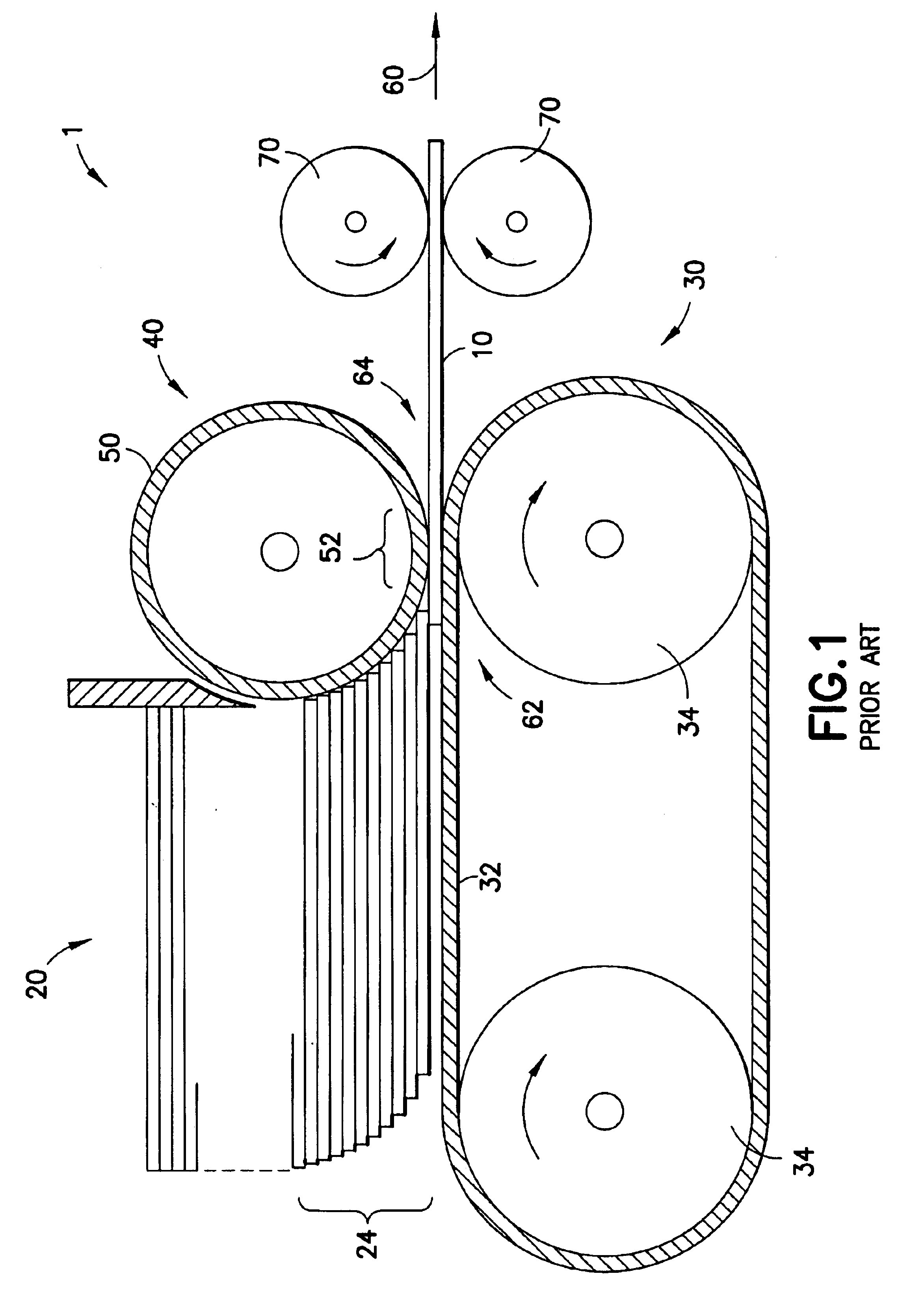Method of improving retard mechanism in friction feeders
a technology of friction feeder and retard mechanism, which is applied in the direction of thin material processing, article separation, transportation and packaging, etc., can solve the problems of reducing the effectiveness of the retarding surface 50, sporadic and inconvenient manual method of furnishing an unworn portion of the retarding surface, and reducing the roughness of the surface, so as to achieve simple yet effective
- Summary
- Abstract
- Description
- Claims
- Application Information
AI Technical Summary
Benefits of technology
Problems solved by technology
Method used
Image
Examples
Embodiment Construction
The present invention prevents the retarding surface from being worn out unevenly at one section thereof. Although the retarding surface will be eventually worn out after extensive use, the wear will be spread out over the entire circumference of the retarding surface in a simple and automatic fashion. As shown in FIG. 2a, the friction feeder 100, according to the present invention, comprises a generally cylindrical retarding element 140 having a retarding surface 150. The retarding surface 150 can be made of a hard material such as tungsten carbide grit, but it is preferred that it is made of a resilient material such as polyurethane or rubber. A resilient surface can be slightly deformed to allow for a reasonable gap between the retarding surface 150 and the driving mechanism 30 to form an the exit nip 164, even if the nip is set slightly fighter than normal. The retarding element 140 comprises a clutch mechanism 144 around the shaft 142 such that the retarding element 140 is lock...
PUM
| Property | Measurement | Unit |
|---|---|---|
| resilient | aaaaa | aaaaa |
| friction | aaaaa | aaaaa |
| time | aaaaa | aaaaa |
Abstract
Description
Claims
Application Information
 Login to View More
Login to View More - R&D
- Intellectual Property
- Life Sciences
- Materials
- Tech Scout
- Unparalleled Data Quality
- Higher Quality Content
- 60% Fewer Hallucinations
Browse by: Latest US Patents, China's latest patents, Technical Efficacy Thesaurus, Application Domain, Technology Topic, Popular Technical Reports.
© 2025 PatSnap. All rights reserved.Legal|Privacy policy|Modern Slavery Act Transparency Statement|Sitemap|About US| Contact US: help@patsnap.com



